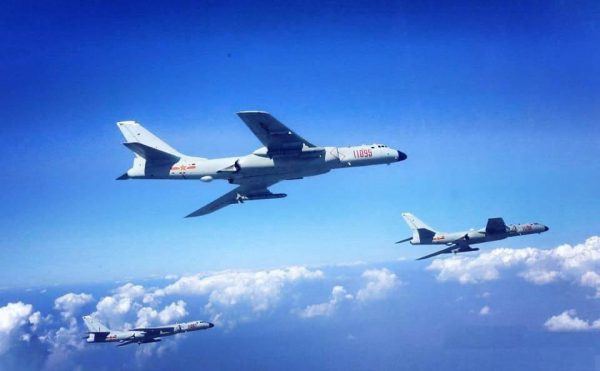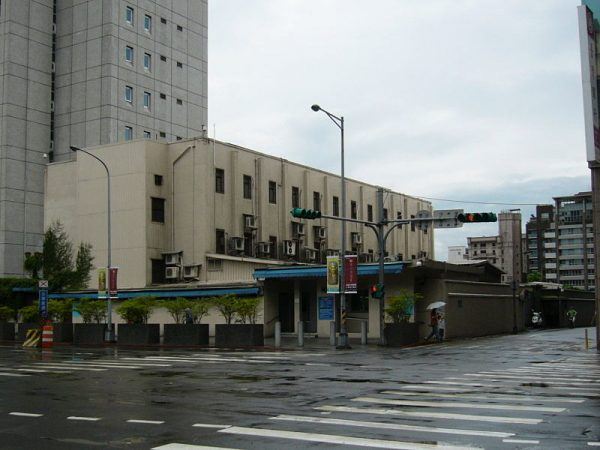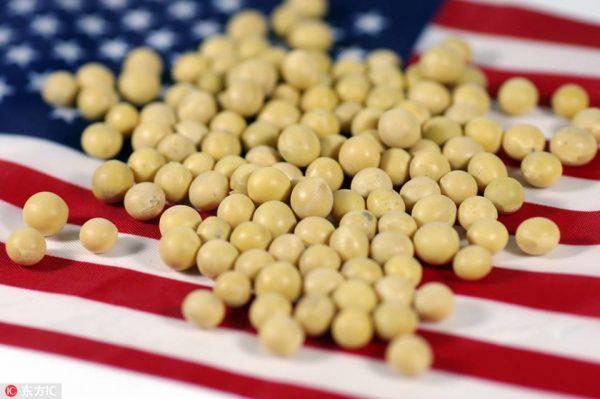Chinese leaders in the Foreign Ministry have urged the US to show maximum restraint on the Taiwan issue to avoid harming bilateral relations. “We have repeatedly emphasized that the Taiwan issue is the most important and sensitive core issue in the China-US relationship,” officials told reporters in Beijing on June 4.
Chinese officials were referring to reports that the United States is considering sending a warship through the Taiwan Strait in a show of support to Taipei. US officials told media sources that the United States had already examined plans for an aircraft carrier passage once this year. The plan was ultimately scrapped, almost certainly out of concern for the Chinese reaction. The move would essentially be a response to a series of Chinese military drills around the self-ruled island the PRC sees as a “rogue province.”
About three weeks ago, China’s air force landed bombers on islands and reefs in the South China Sea as part of a training exercise in the disputed region. An entire division of the People’s Liberation Army Air Force (PLAAF) organized multiple heavy bombers such as the H-6K to conduct take-off and landing training in order to improve the military’s ability to “reach all territory, conduct strikes at any time, and strike in all directions.” The announcement of the exercise on the PLAAF’s site concluded that the drills will prepare the PRC’s armed forces for the coming “battle for the South China Sea.”

The US responded by dispatching warships to various disputed areas in the region. “The United States remains committed to a free and open Indo-Pacific…we have seen these same reports, and China’s continued militarization of disputed features in the South China Sea only serves to raise tensions and destabilize the region,” was the official statement by Pentagon spokesman Lieutenant Colonel Christopher Logan. Now that these vessels have closed distance with Taiwan, they are in a position to display a more concrete show of support for Taiwan.
Sending ships through the strait has been a regular feature of US policy in the region. In 2007, during the administration of George W. Bush, a US aircraft carrier transited the Taiwan Strait. Some American military officials believe the next carrier transit is overdue. Another, less provocative option would be resuming the periodic, but still infrequent, passages by other US Navy ships through the strait, the last of which was in July 2017.
Trump has been one of the most friendly chief executives toward Taiwan in recent memory. The president broke protocol after being elected and took a congratulatory phone call from Taiwan’s president in 2016. Since taking office, President Trump has approved the sale of $1.4 billion worth of arms to Taipei. An even more audacious move came in March, when he signed the Taiwan Travel Act encouraging senior US officials to travel to Taiwan to meet their Taiwanese counterparts and vice versa.
There was even talk of the United States sending top officials to a June 12 dedication ceremony for the new American Institute in Taiwan, which would be America’s de facto embassy in Taiwan.

Trump has toned down his rhetoric about Taiwan in recent months. His progress in reconciling with North Korea has relied heavily on China’s participation. The administration does not want anything to throw that effort off track.
Of course, the question of going through with the Navy’s transit operation in the strait is only the most recent flash point in ongoing tensions between China and the United States. A web of issues transcend regional concerns in the South China Sea and include major economic questions that could substantially affect both countries’ GDPs.
The Strait: Epicenter of a Conflict
As the narrow waterway between the island of Taiwan and the mainland, the Taiwan Strait has been the biggest focal point for the conflict over Taiwan for decades.
Since the Chinese communist revolution in the late 1940s that saw the opposing political party Kuomintang flee to offshore islands, there has been not one but three major crises evolving around the strait. The first occurred in 1954, when China launched a massive assault involving over 70,000 troops on several of the islands occupied by the Kuomintang. Hard shelling of Kuomintang positions began mid-August. The People’s Republic of China were able to seize the Yijiangshan Islands and threatened other Kuomintang positions as well.
The Eisenhower administration began making heavy-handed threats. Congress voted to give the president authority to intervene militarily. The joint chiefs of staff even urged the president to use nuclear weapons to eliminate the Chinese threat. Then-Secretary of State John Foster Dulles stated publicly that the US was seriously considering a nuclear strike. It was this very real danger of America getting involved that forced the Chinese to negotiate in April 1955.
The second eruption of violence took place a short three years later, when in 1958 China renewed the shelling of Taiwanese islands. This time around, the US had an actual treaty with the Taiwan government that it had signed in the midst of the first round of violence. Making good on the Sino-American Defense Treaty, Eisenhower deployed the Seventh Fleet to the area and began transferring weapons to Taiwan forces. The air-to-air missiles and large quantities of artillery pieces supplied by the US gave Taiwan, or the “Nationalist Chinese” as they were called back then, a decisive advantage over the PRC’s military hardware. China was forced into a stalemate.

While several milestones in Taiwan-American relations occurred over the next several decades, it would be another 40 years before the strait would erupt again. The Third Taiwan Strait Crisis took place in 1996, when China decided to conduct a series of live-fire military drills, including missile launches just 60 kilometers north of Taiwan-held territory, to deter what it saw as “independence” sentiments brewing in Taipei.
The trigger for this was the visit of then Taiwanese president Lee Teng-hui to his alma mater, Cornell University, to deliver a speech on “Taiwan’s Democratization Experience.” China saw any visits by Taiwanese leaders to the US as a violation of America’s “One China” policy that recognized PRC as the only legitimate government of China. It was this perceived policy reversal that drove China to flex its muscles in the strait.
In response, Bill Clinton launched the biggest show of US military force in the Pacific since the 1960s. The two aircraft carrier battle groups, Group Seven centered on USS Nimitz, and Group Five centered on USS Independence, along with the amphibious assault ship USS Belleau Wood, were sent to the strait. Again, China was forced to concede that it was in no position to oppose US resolve backed by the threat of military force.
Taiwan in the Age of Trump
The US has shown time and again that it remains committed to Taiwan’s security. But the political/strategic reality can hardly be said to be the same now as it was during previous crises in the strait. In addition to China’s increased military prowess, the US also has to contend with the fact that it needs Chinese cooperation. As mentioned above, China has been an important factor in facilitating North Korea’s reconciliation with the United States.
Beijing holds tremendous leverage over Pyongyang as its only communist ally in the region and its biggest trade partner. While it is in North Korea’s interests to make amends with the US, it is conceivable that China could throw a wrench into the delicate diplomatic process still ongoing between America and the DPRK.
Second is the economic factor. As tensions over Taiwan continue to escalate, Washington and Beijing are still in the midst of negotiations over trade wars that stand to be detrimental to both countries. Trump has threatened to impose a whopping 25-percent tariff on a slew of Chinese goods. In response, China has threatened similar actions against American imports into the PRC. Some of the items make up a substantial portion of the US economy. Consider, for instance, US soybean deliveries to China, a $12 billion business that encompasses half of all US agricultural exports.

In short, gone are the days that the US can throw around its military weight in the strait without risking consequences to its own interests. This means that the administration must tread lightly when determining its South China Sea policy. While America’s determination on guaranteeing Taiwan’s security remains firm, it now needs to balance this with other very important factors. Toning down its display for Taiwanese support and intervening only when absolutely necessary will probably be the best policy stance for the time being.
















